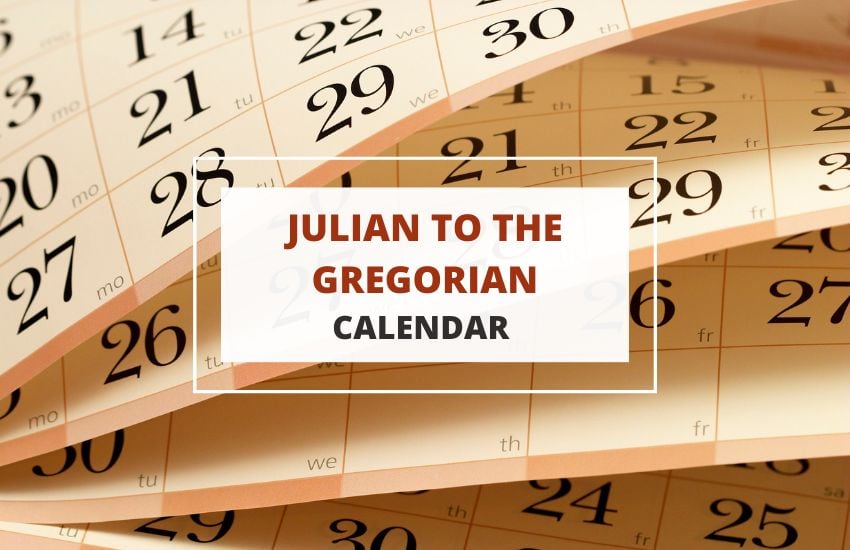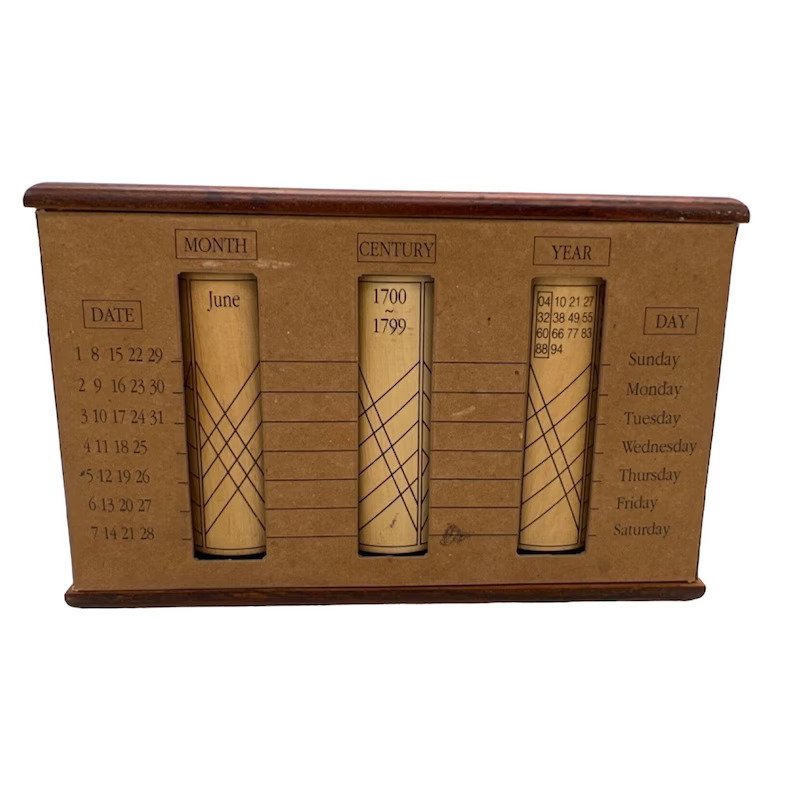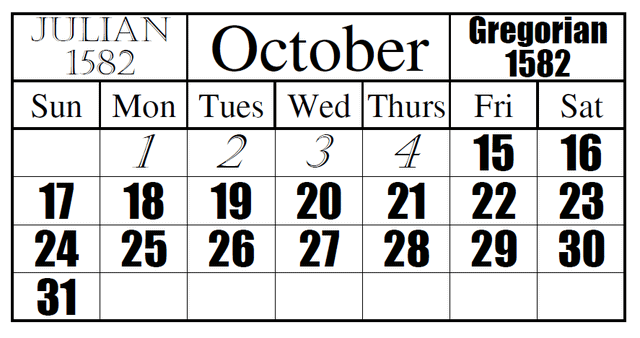
Table of Contents
The Christian world once used the Julian calendar, but in the Middle Ages, this was switched to the calendar we use today – the Gregorian calendar.
The transition marked a significant shift in timekeeping. Initiated by Pope Gregory XIII in 1582, the switch aimed to correct the slight discrepancy between the calendar year and the actual solar year.
But while the adoption of the Gregorian calendar brought about improved accuracy in measuring time, it also meant that 10 days went missing.
Let’s take a look at the Gregorian and the Julian calendars, why the switch was made, and what happened to the missing 10 days.
How Do Calendars Work?

Depending on when a calendar starts measuring time, the “current” date will be different. For example, the current year in the Gregorian calendar is 2023 but the current year in the Buddhist calendar is 2567, in the Hebrew calendar is 5783–5784, and in the Islamic calendar is 1444–1445.
More crucially, however, different calendars don’t just start from different dates, they also often measure time in different ways. The two chief factors that explain why calendars are so different from one another are:
The variations in the scientific and astronomical knowledge of the cultures that come up with different calendars.
The religious differences between said cultures, as most calendars tend to be tied up with certain religious holidays. Those bonds are hard to break.
So, how do these two factors combine to explain the difference between the Julian and the Gregorian calendar, and how do they explain those 10 mysterious missing days?
The Julian and the Gregorian Calendars
Well, let’s first look at the scientific side of things. Scientifically speaking, both the Julian and Gregorian calendars are quite accurate.
That’s especially impressive for the Julian calendar as it is quite old – it was first introduced in the year 45 BC after it was purposed by the Roman consul Julius Caesar a year earlier.
According to the Julius calendar, each year is comprised of 365.25 days divided into 4 seasons and 12 months that are 28 to 31 days long.
To make up for that .25 day at the end of the calendar, each year is rounded down to just 365 days.
Every fourth year (with no exception) gets an extra day (the 29th of February) and is 366 days long instead.
If that sounds familiar, that’s because the current Gregorian calendar is almost identical to its Julian predecessor with just one tiny difference – the Gregorian calendar has 356.2425 days, rather than 356.25 days.
When Was the Switch Made?
The change was instituted in 1582 AD or 1627 years after the Julian calendar. The reason for the change was that by the 16th century, people had realized that the actual solar year is 356.2422 days long. This tiny difference between the solar year and the Julian calendar year meant that the calendar was shifting slightly forward with time.
This wasn’t a huge deal for most people as the difference wasn’t all that major. After all, what does it matter for the average person, if the calendar shifts a little over time if the difference can’t really be noticed in the span of a human lifetime?
Why Did the Church Switch to the Gregorian Calendar?

But it was a problem for religious institutions. This was because many holidays – especially Easter – were tied to certain celestial events.
In the case of Easter, the holiday was tied to the Northern spring equinox (March 21) and is supposed to always fall on the first Sunday after the Paschal full moon, i.e. the first full moon after March 21.
Because the Julian calendar was inaccurate by 0.0078 days per year, however, by the 16th century that had resulted in a drift from the spring equinox by about 10 days. This made timing Easter quite difficult.
And so, Pope Gregory XIII replaced the Julian calendar with the Gregorian calendar in 1582 AD.
How Does the Gregorian Calendar Work?
This new calendar works in almost the same was as the one before it with the small difference that the Gregorian calendar skips 3 leap days once every 400 years.
Whereas the Julian calendar has a leap day (February 29) every four years, the Gregorian calendar has such a leap day once every four years, except every 100th, 200th, and 300th year out of every 400 years.
For example, 1600 AD was a leap year, as was the year 2000, however, 1700, 1800, and 1900 weren’t leap years. Those 3 days once every 4 centuries express the difference between the 356.25 days of the Julian calendar and the 356.2425 days of the Gregorian calendar, making the latter more accurate.
Of course, those paying attention would have noticed that the Gregorian calendar isn’t 100% accurate either. As we mentioned, the actual solar year lasts 356.2422 days so even the Gregorian calendar year is still too long by 0.0003 days. That difference is insignificant, however, that even the Catholic church doesn’t care about it.
What About the Missing 10 Days?
Well, now that we understand how these calendars work, the explanation is simple – because the Julian calendar was already 10 days adrift by the introduction of the Gregorian calendar, those 10 days had to be skipped for Easter to match up with the spring equinox again.
So, the Catholic church decided to make the switch between the calendars in October 1582 as there were fewer religious holidays in that month. The exact date of “the jump” was October 4, the day of the Feast of St. Francis of Assisi – at midnight. The moment that day was over, the calendar jumped to October 15 and the new calendar was implemented.
Now, was that 10-day jump really necessary for any other reason other than the better tracking of religious holidays? Not really – from a purely civic point of view it doesn’t actually matter what number and name a day is given as long as the calendar tracking the days is accurate enough.
So, even though the switch to the Gregorian calendar was good as it measures time better, skipping over those 10 days was only necessary for religious reasons.
How Long Did It Take to Adopt the New Calendar?

Jumping over those 10 days made many people in other non-Catholic countries hesitant to adopt the Gregorian calendar. While most Catholic countries switched almost immediately, Protestant and Orthodox Christian countries took centuries to accept the change.
For example, Prussia accepted the Gregorian calendar in 1610, Great Britain in 1752, and Japan in 1873. Most countries in Eastern Europe made the switch between 1912 and 1919. Greece did so in 1923, and Turkey only as recently as 1926.
This meant that for about three and a half centuries, traveling from one country to another in Europe meant going back and forth in time by 10 days. Furthermore, as the difference between the Julian and the Gregorian calendar keeps increasing, these days it’s over 13 days instead of just 10.
Was the Switch a Good Idea?
Overall, most people agree that it was. From a purely scientific and astronomical point of view, using a more accurate calendar is better. After all, the purpose of a calendar is to measure time. The decision to skip dates was done for purely religious purposes, of course, and that does irritate some people.
To this day, many non-Catholic Christian churches still use the Julian calendar to calculate the dates of certain holidays such as Easter even though their countries use the Gregorian calendar for all other secular purposes. That’s why there is a 2-week difference between Catholic Easter and Orthodox Easter, for example. And that difference is only going to keep growing with time!
Hopefully, if there are to be any future “jumps in time”, they will only apply to the dates of religious holidays and not to any civic calendars.
Wrapping Up
All in all, the switch from the Julian to the Gregorian calendar was a significant adjustment in timekeeping, driven by the need for greater accuracy in measuring the solar year.
While the removal of 10 days may seem odd, it was a necessary step to align the calendar with astronomical events and ensure the proper observance of religious holidays.








